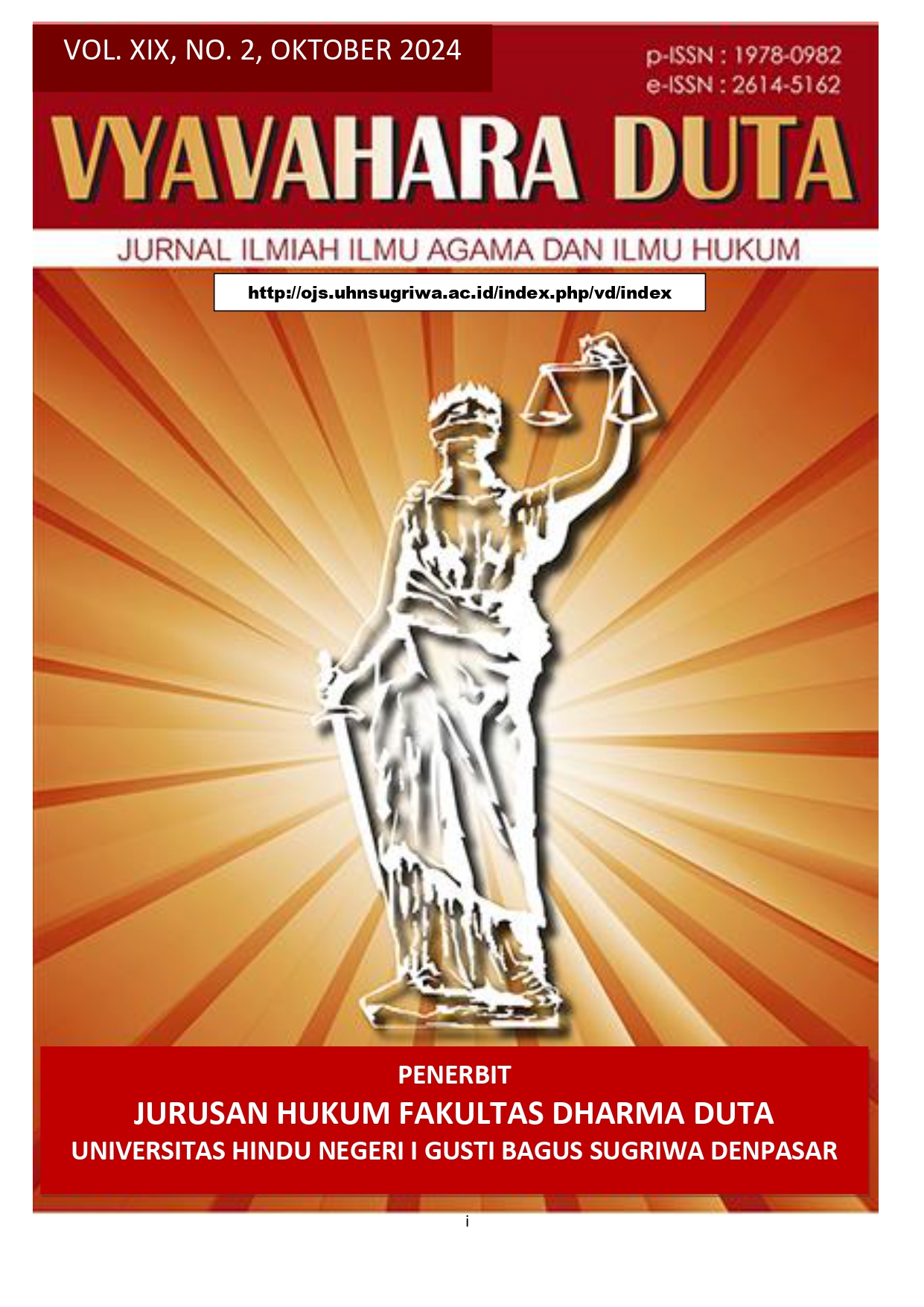KAJIAN YURIDIS PENGANGKATAN ANAK BEDA KASTA BERDASARKAN PERATURAN PEMERINTAH NOMOR 54 TAHUN 2007 TENTANG PELAKSANAAN PENGANGKATAN ANAK
DOI:
https://doi.org/10.25078/vyavaharaduta.v19i2.3693Keywords:
Child Adoption, Different Castes, Child Protectio LawAbstract
Having children is deemed a fundamental objective of marital unions in Hinduism, as delineated within the sacred scriptures, in which the birth of a “Suputra" child is believed will lead parents and ancestors to nirvana. However, not all married couples are fortunate enough to have biological children. There are certain issues that result in married couples being unable to have children biologically. Therefore, in Hinduism, the process of adopting a child who is then considered a biological child and successor of the family lineage is justified. This process is known as "peperasan" or "maperas".
Furthermore, Balinese customs persist in upholding a caste system, known as "Wangsa", which ascribes societal stratification and often compartmentalizes the populace within the customary framework of Bali. This caste difference is often a conservative issue in society, including in the adoption of a child. Therefore, it becomes one of the customary legal issues that needs a juridical inquiry and refers to the provisions of Government Regulation Number 54 of 2007 concerning the Implementation of Child Adoption. Under the provisions of the Law, children are recognized as a weak and vulnerable group requiring protection and entitled to love and a complete family even without their biological parents.
Based on these issues, this research discusses the Juridical Study of Adoption of Children of Different Castes Based on Government Regulation Number 54 of 2007 concerning the Implementation of Child Adoption. And to analyze the issue, a normative juridical legal research method is used with a statutory approach.
Keywords: Child Adoption, Different Castes, Child Protection Law











